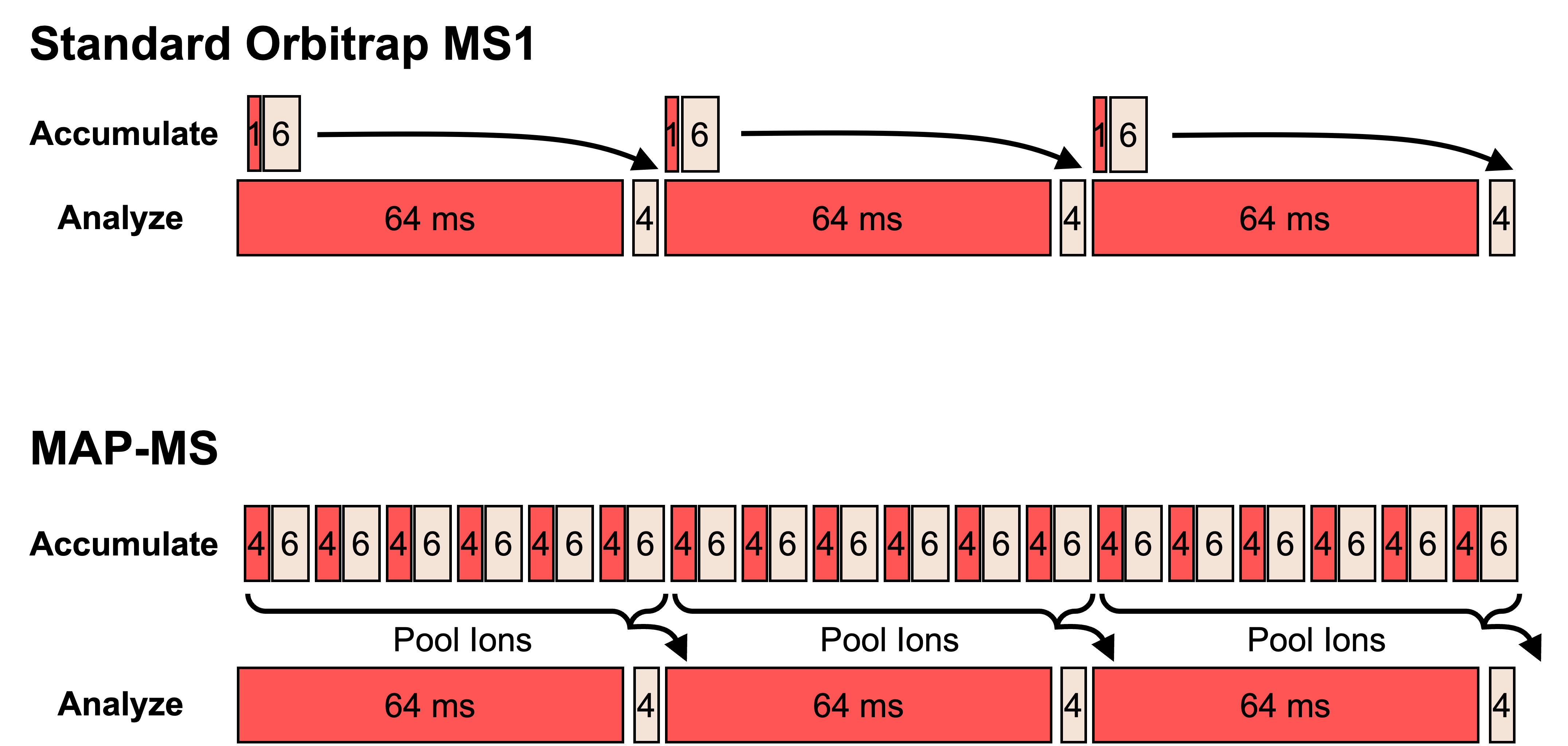MAP-MS

Multiple Accumulation Precursor Mass Spectrometry (MAP-MS)
Description
MAP-MS takes advantage of parallelization in a trapping MS. In a hybrid Q-Orbitrap, parallelization still occurs: while one ion batch is measured, a new batch is accumulated. The Orbi’s small capacity means MS1s accumulate in 1-2 ms, wasting the rest of the ion beam. MAP-MS accumulates pieces of the MS1 mass range in a single spectrum. At first this seems strange, but the benefit is to variably fill each range for a different length of time, allowing the instrument to spend more time on “empty” m/z regions. This produces Orbitrap MS1s with nearly 2x the number of peaks and over 2x the dynamic range of “standard” MS1s.
Citation
Phlairaharn T., Shannon AE, Zeng X, Truong DJ, Schoof EM, Ye Z, Searle BC.
Improving proteomic dynamic range with Multiple Accumulation Precursor Mass Spectrometry (MAP-MS).
J Proteome Res. 2025 Sep 12. doi: 10.1021/acs.jproteome.5c00469.
Download Method Files
MAP-MS Methods
MAP-MS DDA (pdf)
MAP-MS DIA (pdf)
MAP-MS GPF 400-500 (pdf)
MAP-MS GPF 500-600
MAP-MS GPF 600-700
MAP-MS GPF 700-800
MAP-MS GPF 800-900
MAP-MS GPF 900-1000
Standard Methods
Standard DDA (pdf)
Standard DIA (pdf)
Standard GPF 400-500 (pdf)
Standard GPF 500-600
Standard GPF 600-700
Standard GPF 700-800
Standard GPF 800-900
Standard GPF 900-1000